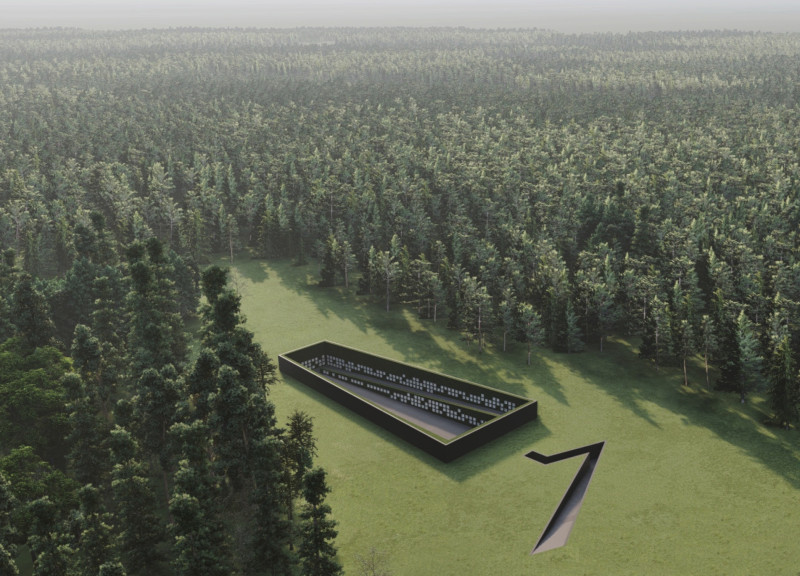5 key facts about this project
A Garden Beyond is an architectural design project conceived as a cemetery that embodies the connection between life and death. Located in a forested environment, the project integrates nature and built form to create a contemplative space. The design promotes interaction and reflection, providing visitors with a meaningful experience as they navigate through the landscape.
The project emphasizes a clear conceptual framework, aiming to dissolve the barriers between the living and the deceased. As users progress through the site, they are guided along a linear pathway that serves as a transitional element, symbolizing the journey from life to death. The design integrates various architectural features, leading to areas meant for contemplation and memorialization.
Nuanced Design Elements
The architectural design incorporates several unique elements that contribute to its distinct character. A prominent linear pathway directs visitors into the cemetery, facilitating a gradual shift in perception as they move from the vibrant living world to a more tranquil environment.
Memorial walls are strategically placed along the pathway, offering niches for remembrance. These walls are adorned with climbing roses, linking natural growth to the narrative of life and rebirth. Reflective patios are integrated into the design, allowing spaces for pause and reflection, thereby enhancing the emotional and spiritual engagement of visitors.
The central void within the cemetery serves as a focal point for gathering and reflection. This sunken area embodies the theme of life's depths and invites community engagement. Terraced gardens display seasonal flora, ensuring a dynamic environment that changes with the seasons. This intentional variation highlights the cycles of life and death, reinforcing the project's conceptual narrative.
Construction and Material Choices
The design employs a minimal yet effective material palette. Concrete is utilized for structural components, providing durability and permanence. Glass is incorporated in memorial niches, allowing natural light to penetrate and create an ethereal atmosphere. Natural stone is used for pathways, ensuring a tactile connection with the earth. Climbing roses play an essential role in adding greenery, symbolizing continuity and the natural lifecycle.
Interactivity and Community Engagement
What sets A Garden Beyond apart from typical cemetery designs is its focus on interactivity with nature. The living plant elements within memorial walls not only serve a decorative function but also symbolize the ongoing relationship between the living and the deceased. The design encourages community participation, transforming the cemetery into a space for collective remembrance and engagement.
As visitors traverse the cemetery, the sequence of spaces fosters a narrative that prompts personal reflection and remembrance. This approach signals a departure from conventional cemetery design, inviting visitors to explore their connections to both nature and memory.
To gain a deeper understanding of A Garden Beyond, readers are encouraged to explore the project's architectural plans, architectural sections, and architectural designs. These resources provide further insights into this thoughtful exploration of architecture, life, and remembrance.






















































